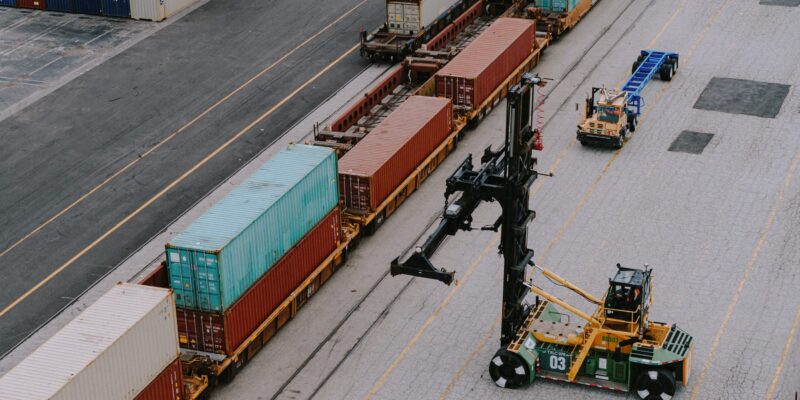Industry recovery and freight procurement in a volatile market

With demand and supply chain volatility still omnipresent, supply chain managers are beginning to plan their 2021 freight needs. In this unprecedented setting, it’s more important than ever to prepare for a range of freight scenarios when thinking through the upcoming year.
When considering how to procure capacity, there are 2 key factors to take into consideration:
- Predictability of your supply chain, including the individual trajectory of your business and industry, and fixed production, storage, and fulfillment needs
- Flexibility of your current capacity procurement plan to address shifts in demand patterns
The first — predictability of freight — is typically best served with contract freight, while the second — flexibility of freight — is best addressed with real-time freight rates. The lanes and percentage of volume you allocate to contract should align with how you believe the next 6-12 months will unfold for your business, as well as for the freight market as a whole.
Moreover, how your RFP fared during the first half of 2020 and the impact of market volatility over the last 2 months on your network should guide how you bid for your next procurement event. Uber Freight’s pricing team has ample experience providing rates to help meet every shipper’s unique needs.
When your supply chain requires flexibility and when predictions are hazy, real-time freight rates are best. Traditionally, real-time rates are provided through spot board and via email. With its unique technology, Uber Freight provides real-time rates through the shipper platform and a real-time pricing API that plugs straight into the shipper’s TMS.1
Freight industry recovery scenarios
Not all industries have fared the same during the coronavirus pandemic. While retail and e-commerce have been experiencing high demand, other industries such as automotive and manufacturing have seen less. Understanding what your recovery could look like is critical to planning ahead.
Here are a few macro recovery scenarios to consider that might help you ascertain what the road ahead looks like for you:
- Rapid Recovery: In this scenario, the market continues to be elevated, on par with 2018 levels. This is mainly driven by high volumes coming in from the ports and the retail and e-commerce sectors. Capacity will remain unbalanced, causing the higher rates in the market. As rejections remain high and routing guides still underperform, a higher proportion of shipments will be tendered through the spot market or to a real-time price API and allowing shippers access to the needed capacity.
- Moderate Recovery: Without a clear congressional stimulus on the horizon, discretionary spending may decrease. The elevated retail sector will recede and the market will begin to soften with a potential spike during the holiday season. As the shippers engage with their carrier base, core pricing is updated and reliance on the spot market is lessened.
- Long Recovery: With the lack of any further government aid, potential re-closings and a harsh flu season, the market may return closer to the levels seen in April. Especially as the winter months carry on in Q1 2021. Shippers should experience lower long-term contract rates from a highly competitive RFP season, particularly if the RFP event is held when this drop in the market is observed. This will allow for the majority of freight to be tendered and executed through the new route guide. Real-time pricing should be a smaller portion of a shipper’s freight mix.
RFP effectiveness
Once you’ve established what your road to recovery might look like, it’s time to start looking internally and assessing the success and flexibility of your procurement plan. Consider how your demand has fared through 2020. Have you needed to use the spot market more than usual, and how has your RFP plan held up throughout a volatile market? How will you plan your next RFP differently?
Partnering with Uber Freight
When considering what is the right solution for you, Uber Freight is able to provide pricing solutions that can match your needs. With the uncertainties ahead, it’s wise to understand and leverage available digital tools, like real-time pricing APIs and load bundling, to ensure you’re positioned for success no matter the scenario. These can help mitigate risk while providing the service required to deliver shipments on-time.
To learn more, please reach out to your Uber Freight representative or sign up here.
Maysem Alsaidi brings 11 years of logistics and transportation experience to Uber Freight, having worked in business development, carrier relations, procurement, and pricing. She led Uber Freight’s contract pricing team for 3 years and now manages all aspects of pricing primarily for enterprise shippers within the CPG and food and beverage verticals.
Mike Sciortino has been in the transportation and logistics industry for over 14 years and has experience in pricing, analytics, strategy, and operations. At Uber Freight, he manages pricing for a variety of shippers in various segments and industries.
1Real-time rates are traditionally provided through the spot market. These rates can be provided through a shipper platform, transportation management systems (TMS), spot boards, and via email. In addition, new technologies, such as real-time pricing API, can now offer this pricing more efficiently and effectively to capture real-time capacity.
Long term rates, most commonly referred to as contract pricing, are usually obtained through an RFP event. Shippers will invite asset and non-asset based transportation providers to submit rates covering a longer period of time, which is usually one year.



